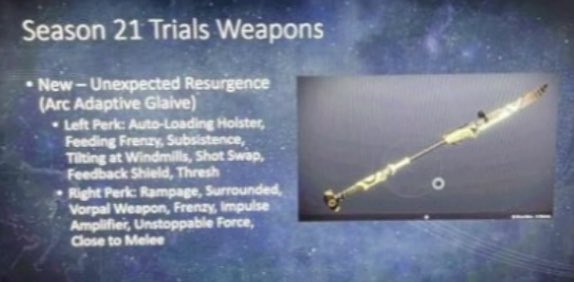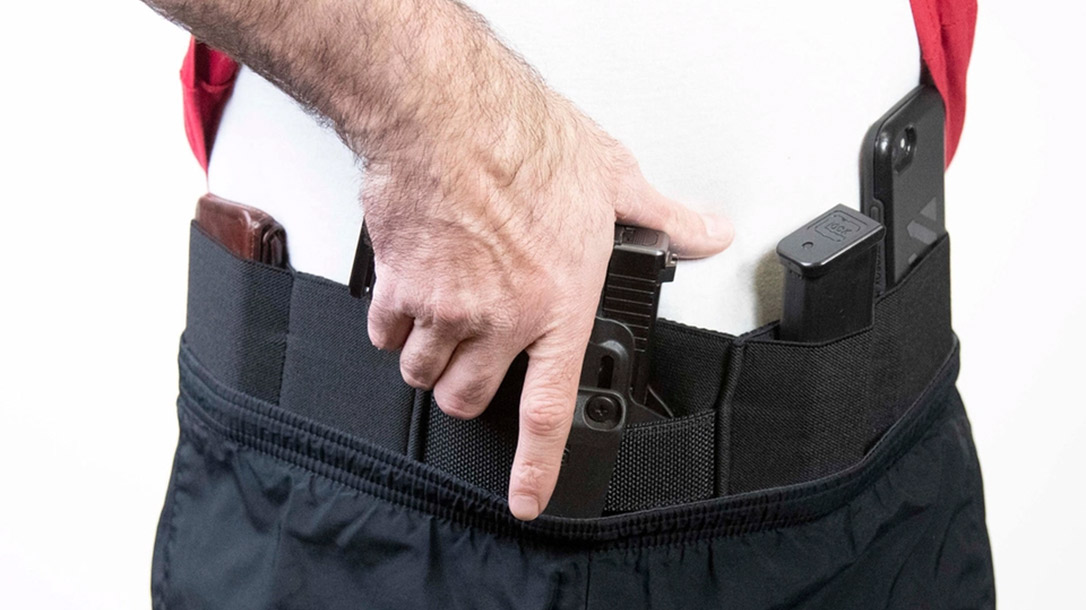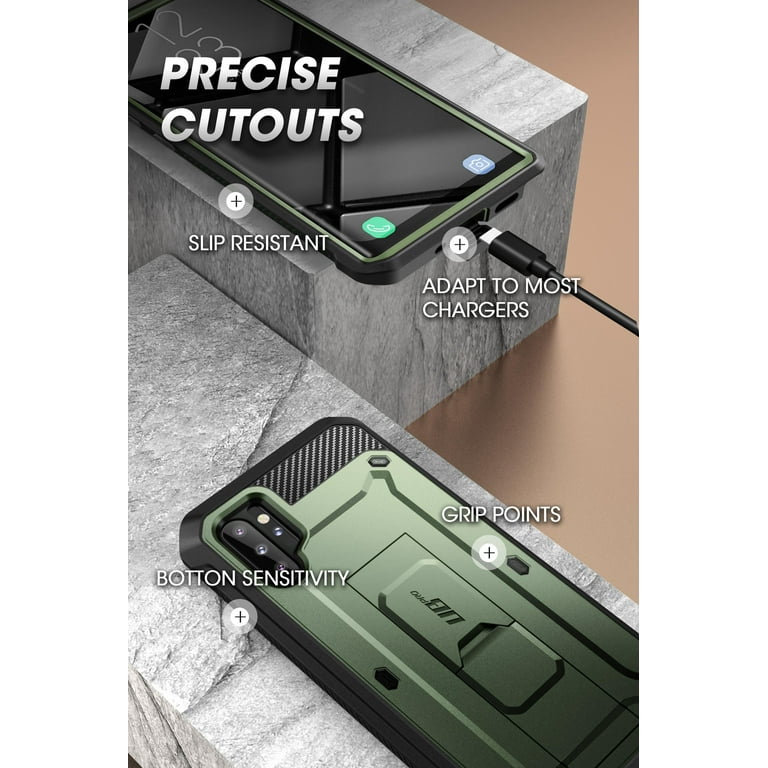Contents
- I. Introduction to Adapting Holsters for Different Seasons
- II. Factors to Consider when Choosing a Holster for Different Seasons
- III. Tips for Adapting Holsters in Winter
- 1. Choose a Holster Material Suitable for Cold Weather
- 2. Consider an Inside-the-Waistband (IWB) Holster with Extra Padding
- 3. Adjust Your Belt Size
- 4. Use Sweat Guards or Moisture-Wicking Liners
- 5. Practice Drawing Techniques While Wearing Winter Gloves
- 6. Regularly Inspect and Clean Your Holster
- 7. Consider an Ankle Holster for Deep Concealment
- IV. Best Holster Options for Hot and Humid Summers
- V. Adapting Holsters for Spring and Fall Seasons
- VI. Importance of Proper Holster Maintenance throughout the Year
- VII. Frequently Asked Questions about Adapting Holsters for Different Seasons
- 1. How do I choose the right holster material for different seasons?
- 2. Can I use the same holster year-round?
- 3. Are there any specific features I should look for in a summer holster?
- 4. What if I want a concealed carry option during winter months?
- 5. Is it safe to wear an ankle holster during rainy seasons?
- 6. Can I modify my existing holster for different seasons?
- 7. Should I consider a retention system for holsters during windy seasons?
- 8. How do I prevent moisture buildup inside my holster during humid seasons?
- 9. Are there any specific maintenance tips for holsters in snowy conditions?
- 10. Can I use the same belt with my holster year-round?
I. Introduction to Adapting Holsters for Different Seasons

When it comes to carrying a firearm, one of the most critical factors to consider is the type of holster you use. A good holster not only ensures the safety and security of your weapon but also provides comfort and accessibility. However, as seasons change, so do our clothing choices and lifestyle activities, which can make finding the right holster a challenge.
In this article, we will explore how to adapt holsters for different seasons without compromising on functionality or style. Whether it’s winter or summer, understanding how to choose and modify your holster accordingly will enable you to carry your firearm comfortably throughout the year.
1. Choosing Materials for Seasonal Adaptation
The first step in adapting holsters for different seasons is selecting appropriate materials that suit various weather conditions. For warmer months, lightweight and breathable fabrics like nylon or mesh are ideal choices as they prevent excess sweating and discomfort.
On the other hand, during colder seasons, opt for holsters made from durable materials such as leather or Kydex that offer better insulation against low temperatures while maintaining their shape.
2. Adjusting Carry Positions
Another aspect to consider when adapting holsters is adjusting your carry positions based on seasonal outfits and activities. In summer when wearing lighter clothing like t-shirts or dresses, appendix carry might be more suitable as it offers better concealment without adding extra layers.
In contrast, during winter when layering up with jackets or coats becomes essential, shifting towards hip carry positions would ensure easy access while accommodating additional clothing layers.
3. Customizing Retention Levels
The retention level of a holster refers to its ability to hold the firearm securely in place until intentionally released by the carrier. Depending on the season and circumstances, it may be necessary to adjust the retention levels of your holster.
For instance, during outdoor activities in summer when you might engage in more strenuous movements like hiking or running, increasing the retention level can prevent accidental weapon dislodgement. Conversely, reducing the retention level during winter when wearing gloves would enable easier and quicker draw under colder conditions.
4. Considering Concealment Options
Concealing your firearm is crucial regardless of the season. However, different outfits and layers can pose challenges for concealment. By exploring various concealed carry options such as inside-the-waistband (IWB) holsters or shoulder holsters that offer better coverage or adaptability to different clothing styles, you can maintain proper concealment throughout the year.
II. Factors to Consider when Choosing a Holster for Different Seasons

When it comes to choosing the right holster for different seasons, there are several factors that should be taken into consideration. Each season brings its own unique challenges and requirements, so it’s important to select a holster that can adapt to these changing conditions.
1. Weather Resistance
The weather plays a significant role in determining the suitability of a holster for different seasons. In hot and humid summer months, you’ll want a holster that is sweat-resistant and breathable to prevent discomfort and moisture buildup. On the other hand, during cold winter months, you might opt for a holster made from materials that provide insulation against low temperatures.
2. Concealment Options
The level of concealment needed may vary across seasons depending on your clothing choices. In warmer months when lighter clothing is worn, consider holsters with minimal printing or those designed specifically for deep concealment such as inside-the-waistband (IWB) holsters or appendix carry holsters.
3. Accessibility
In colder seasons where layering becomes necessary, accessibility becomes crucial. Look for holsters that allow easy access while wearing bulkier clothing or jackets without compromising safety or drawing speed.
4. Adjustability
A versatile holster should offer adjustability options such as adjustable cant angle or ride height to accommodate changes in wardrobe preferences between different seasons.
5. Retention and Security
No matter the season, retention is paramount when selecting a holster – it must securely hold your firearm in place at all times while still allowing quick access when needed most.
In conclusion, selecting an appropriate holster tailored to each season’s unique demands is essential for comfortable and effective concealed carry. By considering factors such as weather resistance, concealment options, accessibility, adjustability, and retention and security, you can ensure that your holster choice meets your needs throughout the year. Remember to regularly evaluate and update your holster selection as seasons change to maintain optimal comfort and safety.
III. Tips for Adapting Holsters in Winter

When the cold winter months roll around, it’s important to make some adjustments to your holster setup to ensure optimal comfort and functionality. Here are some tips on how to adapt holsters for winter:
1. Choose a Holster Material Suitable for Cold Weather
In colder temperatures, certain materials tend to become rigid and less flexible, which can hinder quick and smooth draws. Opt for holsters made from thermoplastics or Kydex as they retain their shape better even in freezing temperatures.
2. Consider an Inside-the-Waistband (IWB) Holster with Extra Padding
IWB holsters provide better concealment during the winter months when you’re wearing multiple layers of clothing. Look for options that offer additional padding or lining on the body-facing side of the holster to prevent discomfort caused by direct contact with your skin.
3. Adjust Your Belt Size
The thickness of winter clothing may require you to loosen your belt slightly or opt for a larger size altogether. This adjustment will accommodate the extra layers without compromising proper holster fit and retention.
4. Use Sweat Guards or Moisture-Wicking Liners
In colder weather, sweating can still occur despite lower temperatures due to increased physical activity or being bundled up in heavy clothing layers. Sweat guards attached to your holster or moisture-wicking liners can help prevent moisture buildup and protect your firearm from potential damage.
5. Practice Drawing Techniques While Wearing Winter Gloves
If you plan on wearing gloves during winter, it’s crucial to practice drawing techniques while wearing them beforehand. Different glove materials may affect grip and dexterity, so familiarize yourself with how they impact your ability to access your firearm quickly and efficiently.
6. Regularly Inspect and Clean Your Holster
Colder weather often brings along additional dirt, moisture, and debris that can accumulate in your holster. Regularly inspect and clean it to ensure smooth operation and prevent any potential malfunctions caused by winter elements.
7. Consider an Ankle Holster for Deep Concealment
If you find yourself wearing long coats or multiple layers that make accessing a traditional holster difficult, consider using an ankle holster for deep concealment. This option allows you to carry a backup firearm discreetly while keeping it easily accessible even with heavy winter clothing.
By making these adjustments during the winter season, you can ensure that your holsters remain comfortable, secure, and functional despite the challenges posed by colder temperatures.
IV. Best Holster Options for Hot and Humid Summers

When it comes to carrying a firearm during hot and humid summers, choosing the right holster is crucial for comfort, safety, and ease of access. Here are some top holster options that are specifically designed to meet the challenges posed by scorching temperatures and high humidity:
Belly Band Holsters
Belly band holsters are perfect for hot summers as they offer excellent concealment without adding any extra layers or bulk. These holsters wrap around your midsection, providing a secure fit while allowing your skin to breathe.
Ankle Holsters
Ankle holsters are an ideal choice when you want to keep your upper body free from any additional weight or heat. They provide discreet carry options without compromising accessibility.
Ventilated IWB Holsters
IWB (Inside-the-Waistband) holsters can be uncomfortable during hot weather due to increased sweat and moisture buildup. However, ventilated IWB holsters address this issue by incorporating breathable materials or perforations that enhance airflow around the firearm.
Hybrid Holsters with Sweat Guards
Hybrid holsters combine the advantages of both Kydex and leather materials. In summers, hybrid holste
V. Adapting Holsters for Spring and Fall Seasons

When it comes to carrying your firearm, it’s essential to consider the changing seasons and adapt your holster accordingly. Spring and fall bring fluctuating temperatures and varying clothing choices, making it crucial to find a versatile solution that ensures both comfort and accessibility. Here are some tips on adapting holsters for these transitional seasons:
1. Opt for Adjustable Retention
Spring and fall weather can be unpredictable, so choosing a holster with adjustable retention is key. As temperatures rise or fall, clothing layers may change, affecting how snugly your firearm fits in the holster. With adjustable retention, you can customize the level of grip on your weapon without compromising safety.
2. Consider Versatile Carry Positions
During spring and fall, you might find yourself wearing different types of clothing that require varied carry positions. For example, lighter jackets in spring may allow for inside-the-waistband (IWB) carry comfortably while heavier coats in fall might necessitate outside-the-waistband (OWB) options.
3. Look for Breathable Materials
In warmer spring temperatures or during moments of physical activity like hiking or outdoor sports, breathability becomes crucial to prevent discomfort caused by excessive sweating around the holster area. Seek holsters made from breathable materials such as mesh fabrics or those with built-in ventilation features.
4. Account for Concealment Challenges
The transition between seasons often means changing wardrobe choices that could affect concealment possibilities significantly. Be mindful of how different fabrics drape over holsters when selecting garments during these transitional periods.
5. Invest in Holster Accessories
To enhance versatility further during spring and fall, consider investing in accessories like adjustable belt clips or modular attachments that allow you to adapt your holster setup according to the season’s requirements. This flexibility ensures optimal comfort and accessibility.
By adapting your holster for the spring and fall seasons, you can confidently carry your firearm while accommodating changing weather conditions and clothing choices. Remember to prioritize adjustability, versatility, breathability, concealment considerations, and invest in accessories that enhance functionality throughout these transitional periods.
VI. Importance of Proper Holster Maintenance throughout the Year
When it comes to owning a holster, proper maintenance is essential to ensure its longevity and optimal performance. Regardless of the season, taking care of your holster will not only extend its lifespan but also guarantee the safety and functionality it offers. Here are some reasons why proper holster maintenance should be a priority throughout the year.
1. Preserve Material Quality
A well-maintained holster retains its material quality over time. Regular cleaning and conditioning prevent dust, dirt, and moisture from accumulating on the surface, which can lead to cracks or damage in certain materials such as leather or Kydex. By keeping your holster clean and conditioned, you’ll ensure that it remains durable and reliable for years to come.
2. Prevent Malfunctions
A properly maintained holster minimizes the risk of malfunctions during critical moments when you need quick access to your firearm. Accumulated debris or loose parts can interfere with smooth draws or reholstering movements, potentially compromising your safety in self-defense situations. Routine maintenance helps identify any issues early on so they can be promptly addressed.
3. Ensure Comfortable Carry
An ill-maintained holster may cause discomfort during daily carry due to wear and tear or incorrect adjustments. By regularly inspecting all components like straps, buckles, clips, or retention devices for signs of damage or loosening screws/buttons/zippers/etc., you can make necessary repairs before they become major inconveniences.
4. Avoid Damage to Firearms
Inadequate maintenance may not only harm your holsters but also endanger your firearms themselves over time if debris builds up inside them due to poor upkeep practices like neglecting regular cleaning schedules after use in harsh environments (e.g., dusty or sandy conditions). By properly maintaining your holsters, you can prevent such damage and ensure the longevity of both the holster and firearm.
5. Adaptability to Seasonal Changes
Throughout the year, weather conditions fluctuate, necessitating adjustments to your carry setup. Proper maintenance allows you to adapt your holsters accordingly. For example, in hotter months, sweat buildup can affect leather holsters’ integrity, requiring more frequent cleaning and conditioning. On the other hand, winter may demand additional lubrication for smoother draw strokes due to lower temperatures affecting certain materials.
In conclusion, neglecting proper holster maintenance is not an option for responsible gun owners. By preserving material quality, preventing malfunctions, ensuring comfort during carry, avoiding damage to firearms themselves while adapting them seasonally; you enhance safety levels while maximizing their lifespan and performance throughout the year.
Remember that taking care of your holsters is an investment in both functionality and peace of mind when it matters most. So make sure to incorporate routine cleaning schedules and inspections into your firearm maintenance regimen today!
VII. Frequently Asked Questions about Adapting Holsters for Different Seasons
When it comes to adapting holsters for different seasons, many gun owners have questions and concerns. In this section, we address some of the most frequently asked questions to help you navigate the challenges that changing weather conditions present.
1. How do I choose the right holster material for different seasons?
The choice of holster material largely depends on your personal preferences and needs. For warmer seasons, you might consider materials like nylon or Kydex that are lightweight and breathable. In colder climates, leather holsters provide better insulation against the elements.
2. Can I use the same holster year-round?
In most cases, yes! However, it’s important to ensure that your holster is adaptable enough to accommodate changes in clothing styles due to seasonal variations – such as wearing bulkier jackets during winter months.
3. Are there any specific features I should look for in a summer holster?
A summer-friendly holster should prioritize comfort and ventilation to keep you cool during hot weather conditions. Look for designs with moisture-wicking properties or those made from breathable materials like mesh.
4. What if I want a concealed carry option during winter months?
If you need a concealed carry option in colder weather when layering clothing is necessary, consider appendix carry or inside-the-waistband (IWB) holsters designed specifically for deep concealment under multiple layers of clothing.
5. Is it safe to wear an ankle holster during rainy seasons?
Ankle holsters can be worn in rainy seasons; however, it’s essential to ensure proper protection from moisture by choosing a waterproof or water-resistant model made from durable materials such as neoprene or synthetic fabric.
6. Can I modify my existing holster for different seasons?
In some cases, yes. Depending on the design and construction of your holster, you may be able to make adjustments such as adding extra padding or changing the mounting options to better suit different seasonal needs.
7. Should I consider a retention system for holsters during windy seasons?
A retention system is always a good idea regardless of the season. It provides an added layer of security, ensuring that your firearm stays in place even during strong winds or sudden movements.
8. How do I prevent moisture buildup inside my holster during humid seasons?
To prevent moisture buildup, ensure proper air circulation by using holsters with open designs or those featuring ventilation holes and regularly cleaning and drying your holster after use.
9. Are there any specific maintenance tips for holsters in snowy conditions?
In snowy conditions, it’s crucial to protect leather holsters from excessive moisture by applying a waterproofing agent regularly. Additionally, avoid exposing them directly to heat sources like heaters or fireplaces that can cause damage.
10. Can I use the same belt with my holster year-round?
If your belt is made from durable materials like nylon or reinforced leather, it should be suitable for year-round use with different holsters. However, ensure proper adjustment and compatibility between the belt and each specific type of holster you choose.

Brian Belko is a freelance writer and blogger. His primary areas of focus include the outdoors and shooting sports. In addition to his freelance work, Brian also writes for Wide Open Spaces and is on the Pro Staff at Military Hunting and Fishing. When he isn’t busy writing, Brian enjoys fishing farm ponds for bass and hitting the spring woods during turkey season.
